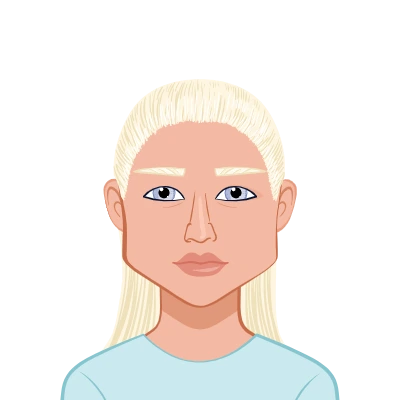From Pixels to Patterns: MATLAB for Texture Analysis in Image Processing Assignments

In the expansive field of image processing, tackling texture analysis stands out as a captivating yet formidable task. The ability to decipher patterns and structures within an image holds immense significance across diverse applications, ranging from crucial tasks in medical imaging to the intricate demands of remote sensing. Particularly for students seeking assistance with Image Processing Assignment, the mastery of tools and techniques for texture analysis becomes paramount. In the following discourse, we will embark on an insightful journey from pixels to patterns, placing a spotlight on how MATLAB emerges as a potent ally for students navigating the complexities of texture analysis assignments. This exploration aims not only to provide theoretical insights but also practical guidance, ensuring that students can confidently apply MATLAB's robust functionalities to unravel the intricacies of textures within the realm of image processing assignments.
The Essence of Texture Analysis
Texture in images refers to the spatial arrangement of colors and intensity variations. It plays a pivotal role in image interpretation and understanding. Texture analysis involves extracting meaningful information from these patterns, enabling the characterization and differentiation of diverse surfaces. Whether it's identifying anomalies in medical images or discerning terrain types in satellite imagery, texture analysis forms the bedrock of many image processing applications.

MATLAB: Your Gateway to Texture Analysis
MATLAB, a high-level programming language widely used in academia and industry, provides an ideal platform for texture analysis. Its rich set of functions and toolboxes, coupled with its intuitive syntax, makes it a go-to choice for students navigating through complex image processing assignments. Let's explore how MATLAB can be leveraged at different levels for texture analysis.
Mastering the Basics: Getting Started with MATLAB for Texture Analysis
Before diving into texture analysis, it's crucial to grasp how MATLAB represents images. In MATLAB, images are essentially matrices where each element corresponds to a pixel value. Understanding this matrix representation lays the foundation for manipulating and analyzing images effectively.
In MATLAB, loading an image is as simple as using the imread function. For grayscale images, the resulting matrix is a 2D array, while color images are represented as 3D arrays (height x width x channels). By visualizing these matrices, students gain insights into the image structure, paving the way for more advanced analyses.
With a solid understanding of image representation, students can then explore basic image processing operations, such as filtering and convolution. MATLAB provides a plethora of built-in functions for these operations, allowing students to enhance or suppress certain texture features.
Preprocessing Techniques for Texture Enhancement
Once the basics are mastered, students can delve into preprocessing techniques to enhance texture features in images. MATLAB's Image Processing Toolbox comes to the forefront, offering a myriad of functions for filtering, smoothing, and edge detection.
Texture enhancement often involves the application of filters such as the Gaussian filter or the Sobel operator. MATLAB simplifies this process with functions like imgaussfilt and edge, enabling students to experiment with different filter parameters to accentuate texture patterns.
Additionally, normalization techniques can be employed to standardize the pixel values, ensuring a consistent basis for texture analysis. MATLAB's statistical functions facilitate the computation of mean and standard deviation, allowing students to normalize images effectively.
Advanced Techniques: Texture Analysis in MATLAB
With a solid foundation, students can progress to the heart of texture analysis—feature extraction. MATLAB provides an extensive set of tools for computing texture features, ranging from simple statistical measures to advanced methods like Gabor filters.
Statistical features such as mean, standard deviation, and entropy offer insights into the distribution of pixel intensities, serving as initial descriptors of texture. MATLAB's regionprops function simplifies the extraction of these features from segmented regions of interest.
For more intricate texture patterns, Gabor filters can be employed to capture both frequency and orientation information. MATLAB's gabor function facilitates the application of Gabor filters, enabling students to experiment with different parameters to tailor the analysis to specific textures.
Bringing It All Together: Case Studies and Practical Applications
Armed with these fundamental and advanced MATLAB techniques, students can now tackle real-world assignments in texture analysis. The ability to preprocess images effectively, enhance texture features, and extract meaningful descriptors equips them with the tools needed to unravel complex patterns within images.
As a practical exercise, students can explore medical imaging datasets, identifying anomalies or specific tissue types based on texture analysis. Similarly, satellite imagery offers opportunities to discern land cover patterns through texture analysis, showcasing the versatility of MATLAB in diverse applications.
Unveiling Advanced Texture Analysis Techniques with MATLAB
Having established a solid foundation in MATLAB basics for image processing, it's time to elevate your understanding to more advanced texture analysis techniques. As assignments become more intricate, students can explore the capabilities of MATLAB's specialized toolboxes and functions tailored for texture characterization.
1. Wavelet Transform for Multiresolution Analysis:
Delve into the world of multiresolution analysis using wavelet transforms. MATLAB's Wavelet Toolbox provides a comprehensive set of functions for decomposing images into different frequency components. This not only allows for a more detailed inspection of textures at various scales but also aids in capturing subtle variations that might be overlooked in traditional analyses.
The wavedec2 function, for instance, facilitates the 2D wavelet decomposition of images. Students can experiment with different wavelet families and levels of decomposition to extract features that contribute to a richer understanding of texture patterns.
2. Texture Classification Using Machine Learning:
Extend your MATLAB prowess into the realm of machine learning for texture classification. MATLAB's Statistics and Machine Learning Toolbox offers a seamless integration of machine learning algorithms into the texture analysis workflow.
Students can explore supervised learning techniques, training classifiers to differentiate between different texture classes. Leveraging algorithms such as Support Vector Machines (SVM) or Convolutional Neural Networks (CNN) enhances the ability to automatically categorize textures based on learned patterns. MATLAB's functions like fitcecoc for SVM or the Neural Network Toolbox simplify the implementation of these powerful classification tools.
Bridging the Gap: Integrating Advanced Techniques with Practical Applications
As students gain proficiency in these advanced texture analysis techniques, the bridge between theoretical knowledge and practical applications strengthens. Assignments can now involve not only the extraction of texture features but also the development of algorithms that automate the identification and classification of textures within diverse datasets.
By incorporating machine learning into their MATLAB-based workflow, students are better equipped to tackle real-world challenges. Applications range from automated medical image diagnosis to the efficient classification of materials in industrial quality control processes. This fusion of advanced MATLAB techniques and practical problem-solving skills positions students at the forefront of innovative solutions in the field of image processing.
Navigating the Terrain: MATLAB Filters and Transformations for Texture Refinement
Once students have grasped the foundational concepts of image representation and basic preprocessing, the next frontier in texture analysis involves the strategic use of MATLAB filters and transformations to refine and amplify texture patterns. MATLAB's extensive library of filtering techniques opens up a spectrum of possibilities for students seeking to enhance specific aspects of texture in their assignments.
1. Spatial Domain Filtering for Texture Emphasis
In the spatial domain, convolution and filtering techniques take center stage. MATLAB's imfilter function becomes a potent ally, enabling students to experiment with a variety of filters like the Laplacian and high-pass filters. These filters excel at emphasizing edges and fine details, bringing out nuanced texture variations in images.
By applying spatial domain filters iteratively and understanding their impact on different textures, students gain insights into the art of selectively enhancing or suppressing specific features. This hands-on experience proves invaluable in developing an intuitive feel for how MATLAB manipulates pixel values to influence texture representation.
2. Frequency Domain Transformations for Texture Exploration
Venturing into the frequency domain, students can harness MATLAB's Fourier transform capabilities to unravel texture patterns at different scales. The fft2 function facilitates the transformation of an image into its frequency components, allowing students to analyze and manipulate the distribution of frequencies.
Moreover, students can explore the power of wavelet transforms using MATLAB's wavedec2. Wavelet transforms offer a multi-resolution analysis, enabling the identification of textures at varying levels of detail. This nuanced approach to frequency domain analysis proves instrumental in capturing intricate textures that might be overlooked in the spatial domain alone.
Empowering Students with MATLAB: Beyond Syntax to Intuition
As students delve into spatial and frequency domain transformations, they not only expand their technical prowess but also cultivate an intuitive understanding of texture analysis. MATLAB serves as the conduit through which students bridge theoretical concepts with practical applications, fostering a holistic approach to image processing assignments.
Armed with a refined skill set in MATLAB filters and transformations, students are better equipped to tackle diverse texture analysis challenges. From medical imaging nuances to fine-grained textural distinctions in satellite imagery, the ability to strategically apply filters and delve into frequency domain intricacies empowers students to dissect and comprehend the rich tapestry of textures embedded in images.
Advanced Techniques: Texture Analysis in MATLAB
Building on the foundation of MATLAB's filtering and transformation capabilities, the journey into advanced texture analysis reaches its zenith with feature extraction. This phase involves distilling the enhanced textures into meaningful descriptors, laying the groundwork for robust characterization.
1. Harvesting Rich Data with Texture Descriptors
MATLAB's toolbox offers an arsenal of texture descriptors, ranging from the classical statistical measures to more sophisticated methods. Students can leverage functions like graycoprops for analyzing texture co-occurrence matrices or haralickTexture for extracting Haralick features. These descriptors encapsulate complex textural information, providing a quantitative basis for comparing and classifying different textures.
2. Beyond Basics: Unleashing the Power of Gabor Filters
While Gabor filters were introduced in the foundational stage, their true potential comes to the forefront during feature extraction. MATLAB's gaborFeatures function allows students to harness the comprehensive information offered by Gabor filters, encapsulating not just frequency and orientation but also spatial characteristics.
As students delve into feature extraction, the ability to judiciously select and combine descriptors becomes an art form. MATLAB's flexibility enables students to experiment with different combinations, refining their approach based on the unique challenges posed by each texture analysis assignment.
Bringing It All Together: Fostering Creativity in Texture Analysis
The synergy of MATLAB filters, transformations, and feature extraction techniques transforms the once-seemingly intricate world of texture analysis into a canvas for creativity and innovation. As students amalgamate their knowledge, they are not just mastering syntax; they are cultivating an intuitive understanding of how to unravel the intricacies of textures within images.
In the final lap of their assignments, students can integrate these advanced techniques to address real-world problems. By applying spatial and frequency domain transformations judiciously and extracting pertinent features, they unravel the nuanced stories that textures tell in medical scans, geological surveys, or any other domain where image texture is a critical element.
Conclusion:
In conclusion, mastering texture analysis in image processing assignments is a rewarding journey, and MATLAB serves as an invaluable companion along the way. From understanding image representation to advanced feature extraction, MATLAB's capabilities empower students to unravel the intricate patterns hidden within pixels.
As students embark on their assignments, the key lies not just in using MATLAB as a tool but in developing a conceptual understanding of texture analysis. By combining theoretical knowledge with hands-on MATLAB experience, students can confidently navigate the complex landscape of image processing, paving the way for innovative solutions and discoveries in the world of pixels and patterns.